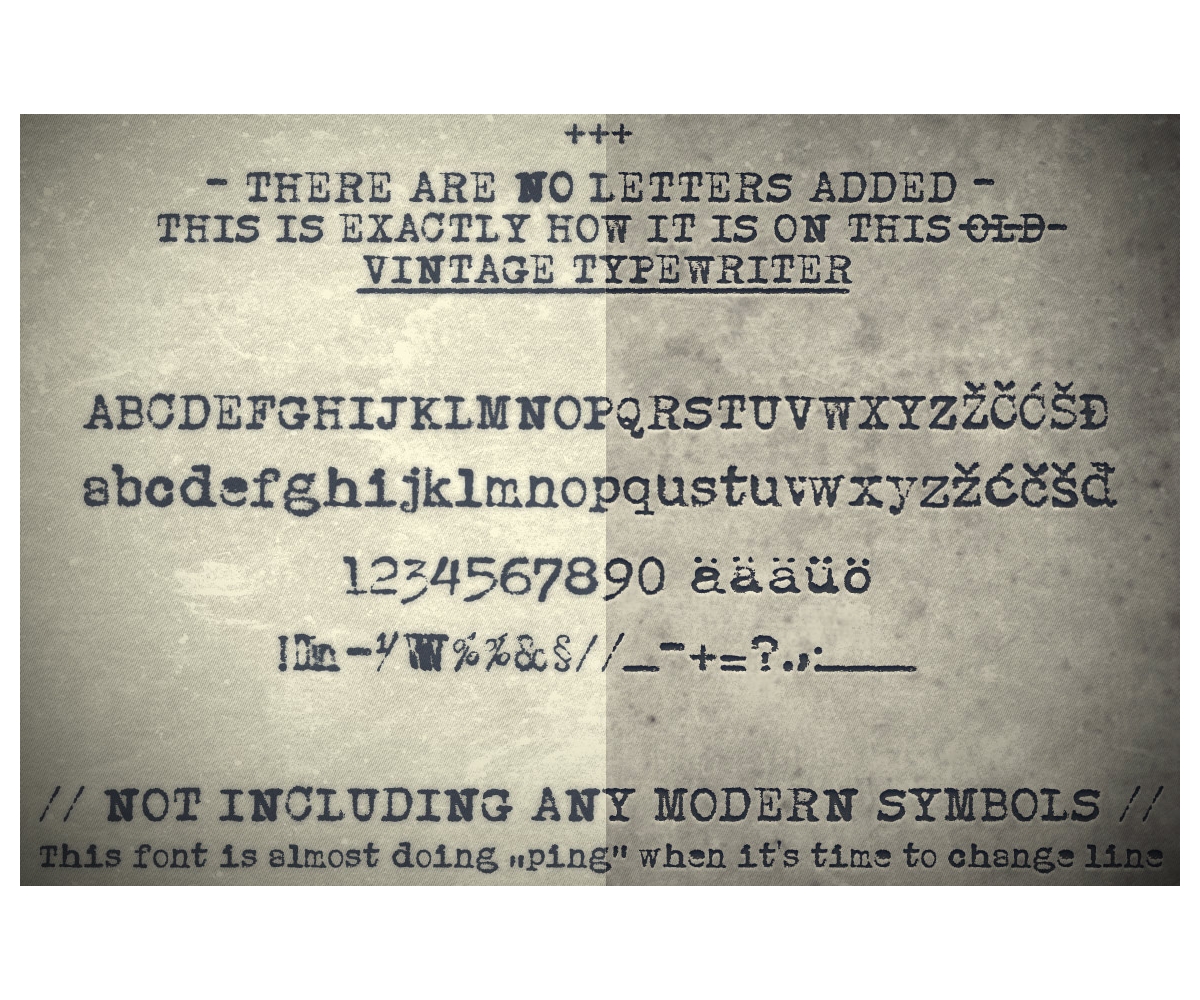
I was fortunate enough to find issue #6 from 1962 in which an entire section of the journal was dedicated to typewriter typefaces (fig. One of the things that I became most curious about was the names or types of custom typewriter typefaces that had been used during the height of typewriter technology and how many typefaces were commercially available to typewriter owners.Īfter a bit digging around, I found a fantastic resource at the Walker library-a journal about design and typography titled Typographica. I began to think about how I only wished that making typographic selections were that simple and hands on (a sort of no-nonsense approach to typography). This notion of using alternate typewriter typefaces sparked my interest in many ways. Looking at both of these books and their lo-fi aesthetics, it’s almost as though I can imagine Muschamp and Nannucci sitting at their typewriters, manually interchanging their typeface cassettes for an alternate typeface, or, even completely switching typewriters for that matter. 5)-are a complete contrast to what we typically visualize when thinking about typewriter typefaces. 4)-much like the cursive typeface found in File Under Architecture (fig. The cursive and stylized features of the typeface (fig. Vraag” on these pages is that it was unlike anything I had seen in the realm of typewritten documents. What I found most striking about the typeface defining the words of “P.S. There is a typeset interview within a standard stapled document that is housed in this artist book in which one alternate typeface is implemented as a way to differentiate one commentators words from the other. In this particular context, typewriter typefaces are used more simply. In a similar way to File Under Architecture, I appreciate the raw and semi-processed spirit of certain components of this artist book. The artist book from Maurizio Nannucci is also quite special considering its unbound nature and the range of delicate and rare materials (prints on tissue paper, photographs, a 7-inch vinyl record, etc.) included throughout the book.

But despite the irregular cadence and the non-unified system seen throughout this set of sidenote typefaces, they beg to be read. The varying characteristics of the typefaces give the sidenotes of this book a distinct feel and an almost distracting voice.

As for the typefaces that this book is set in, there are four supplemental typewriter typefaces used as sidenotes (in addition to the standard typeface used for the body text). The combination of these nuances, in my mind, are features that make this book a precious and more noticeably tactile object. File Under Architecture-with its cardboard cover, grocery-bag-like text paper, generously spaced lines, absence of imagery and its appearance of being completely typeset on a typewriter-is impressive in terms of its restraint and pragmatism (fig.


 0 kommentar(er)
0 kommentar(er)
